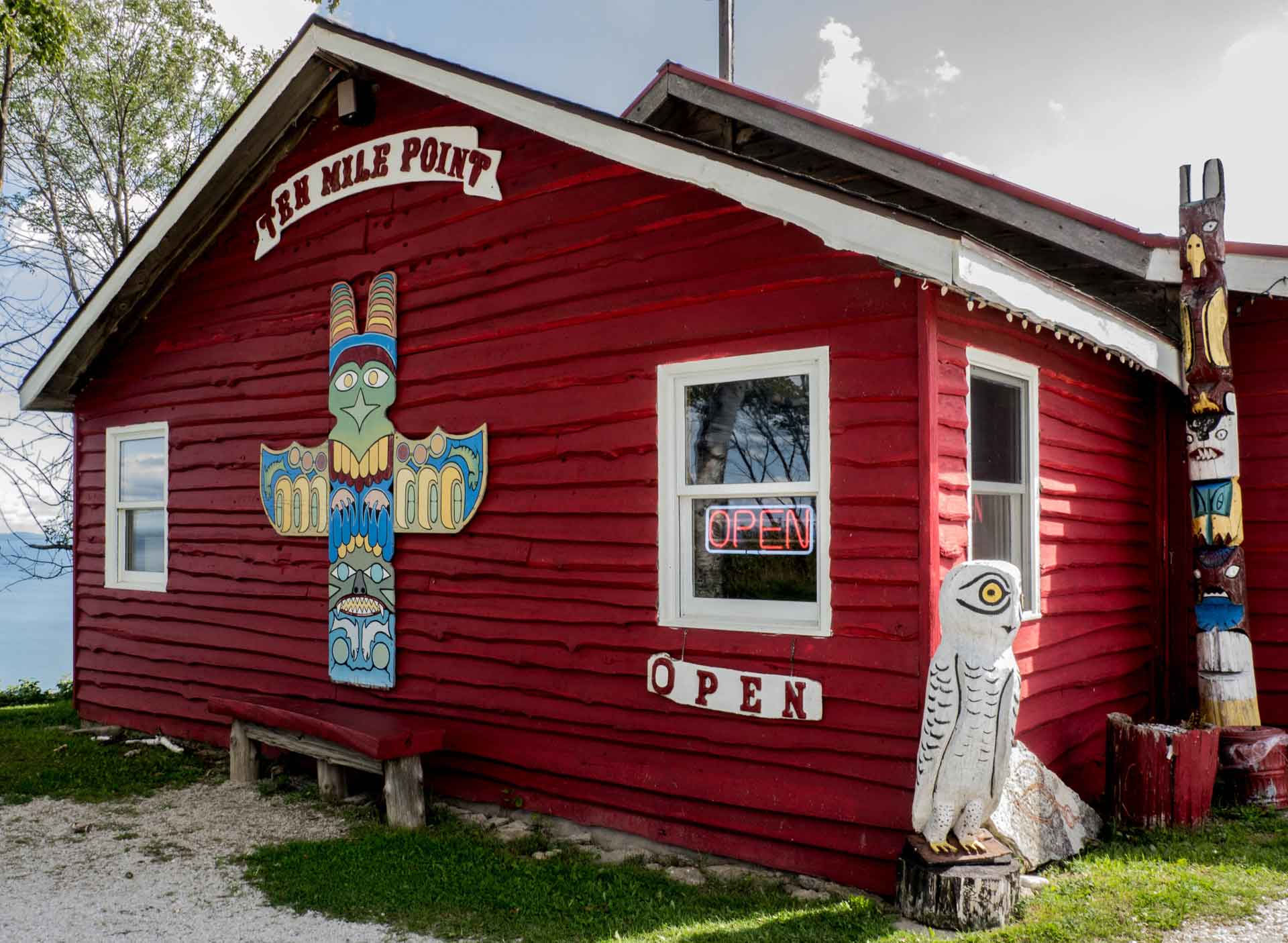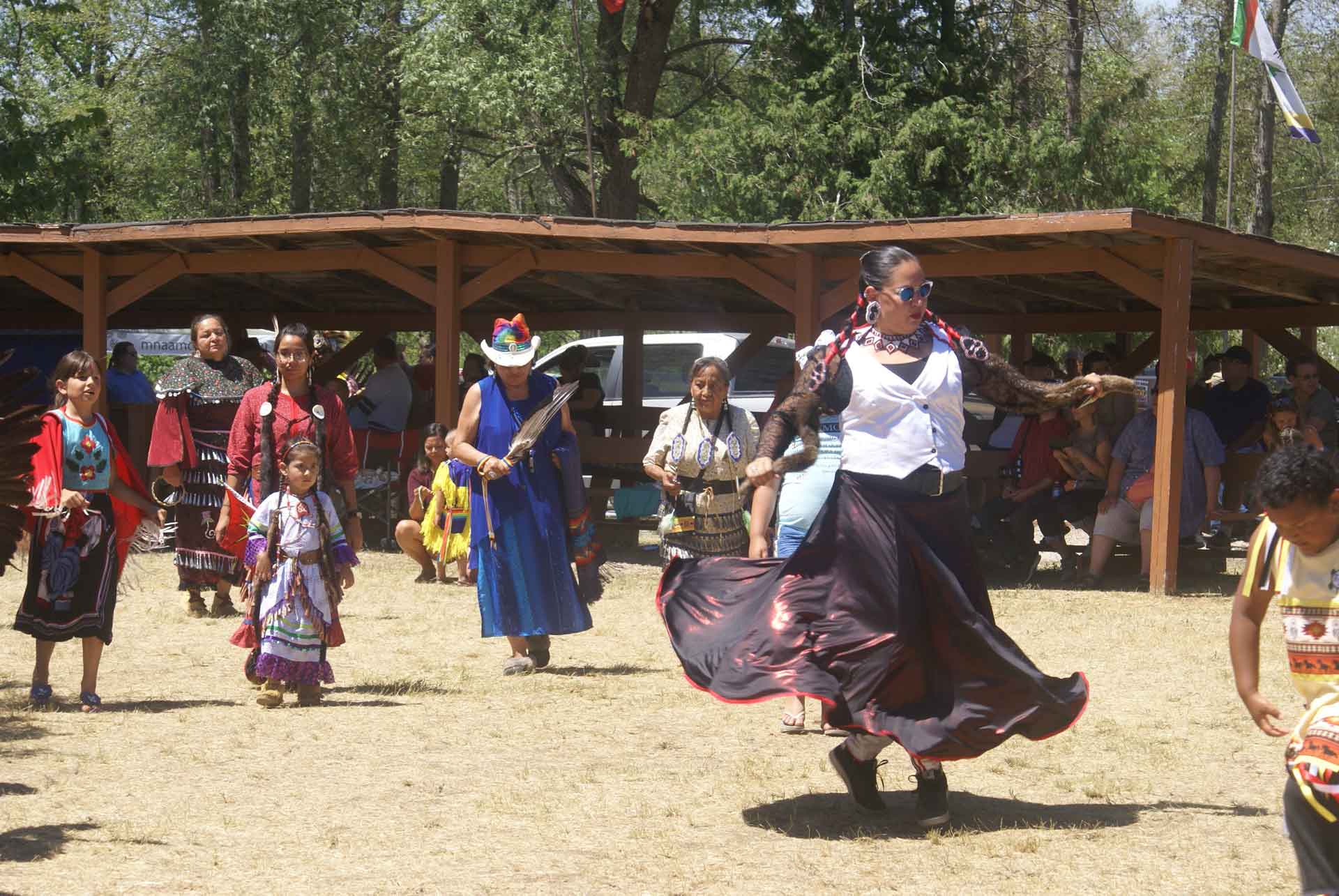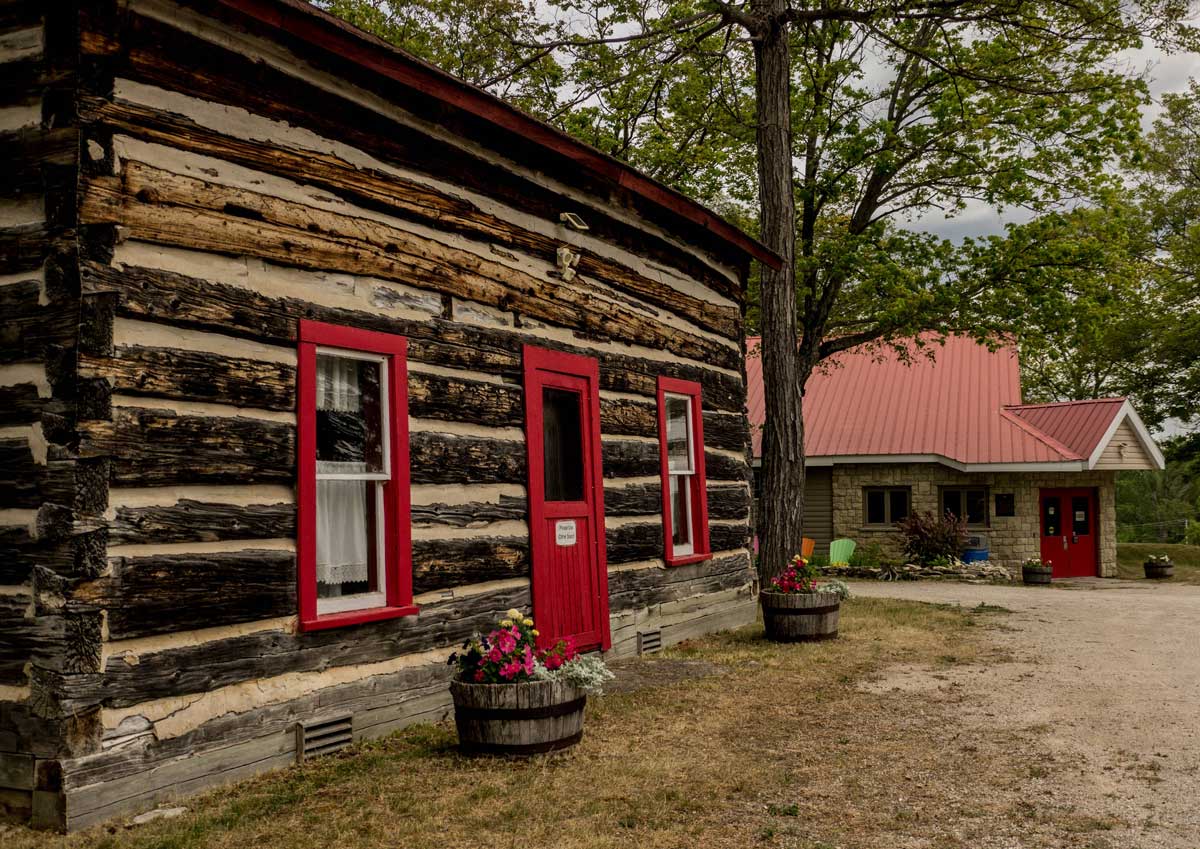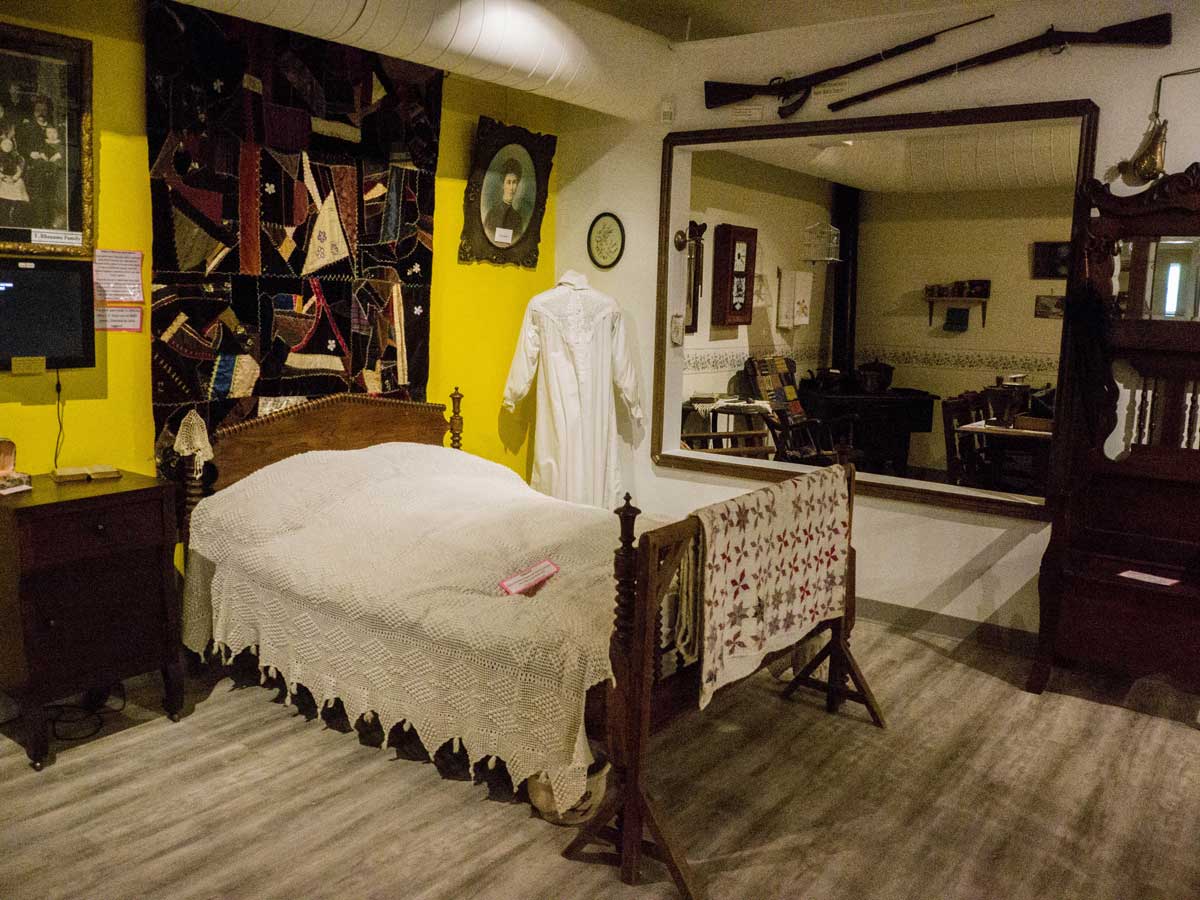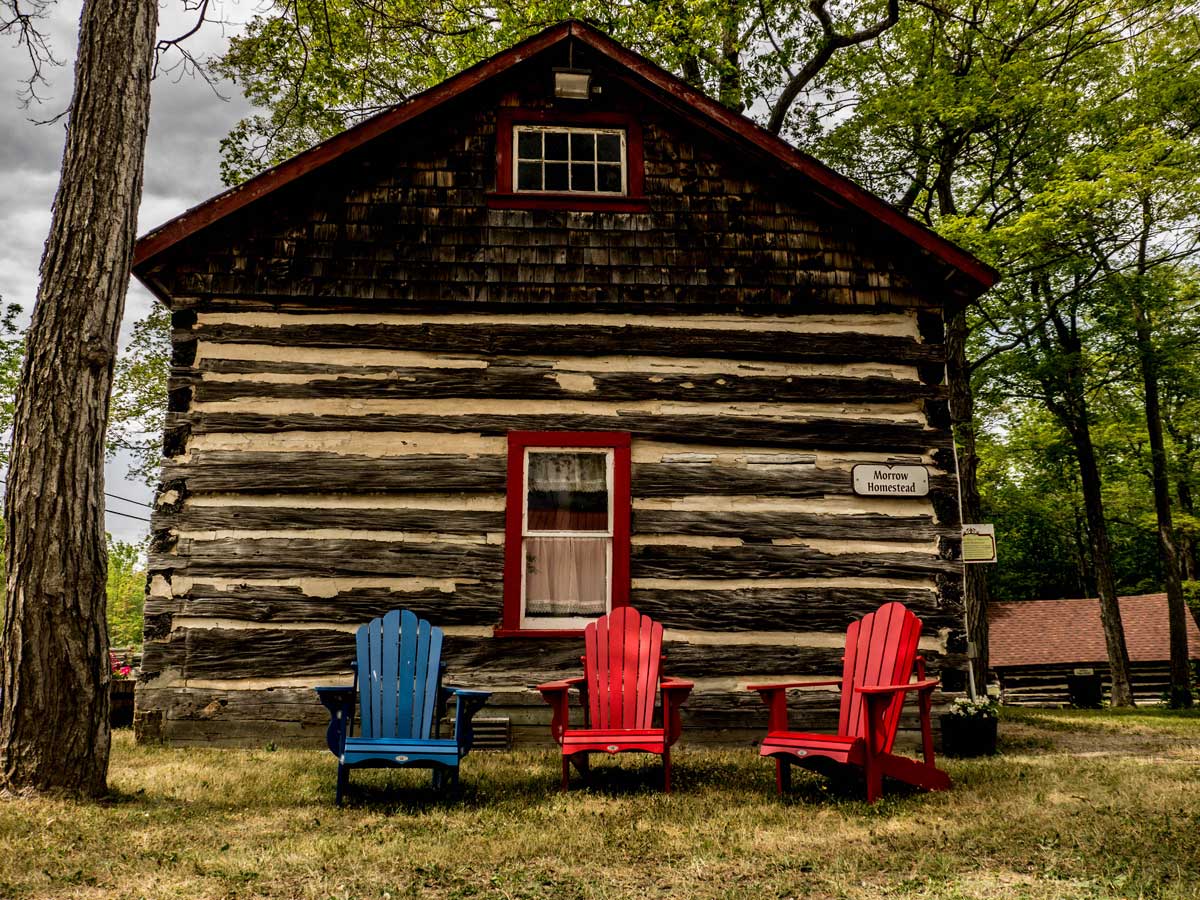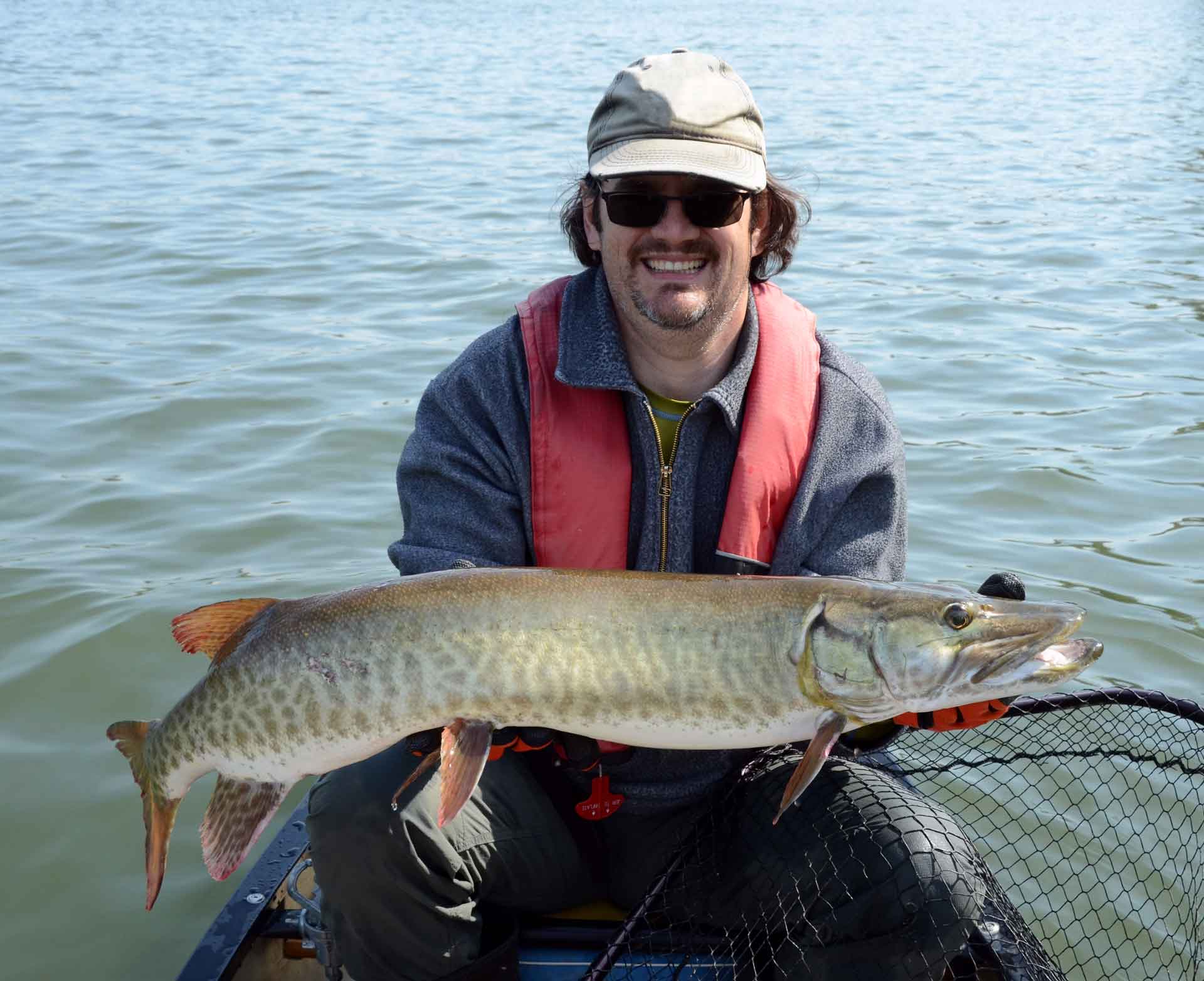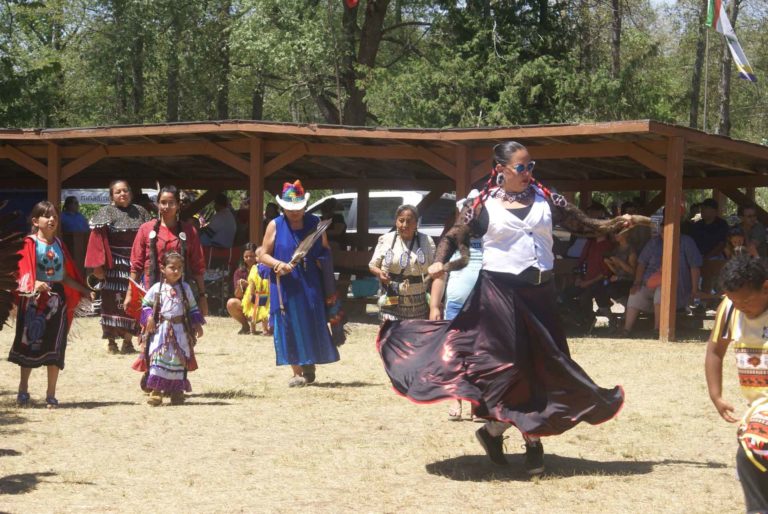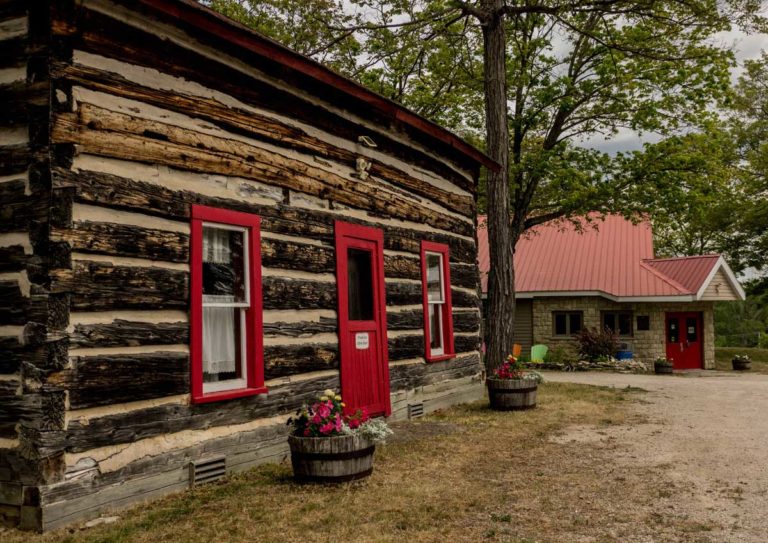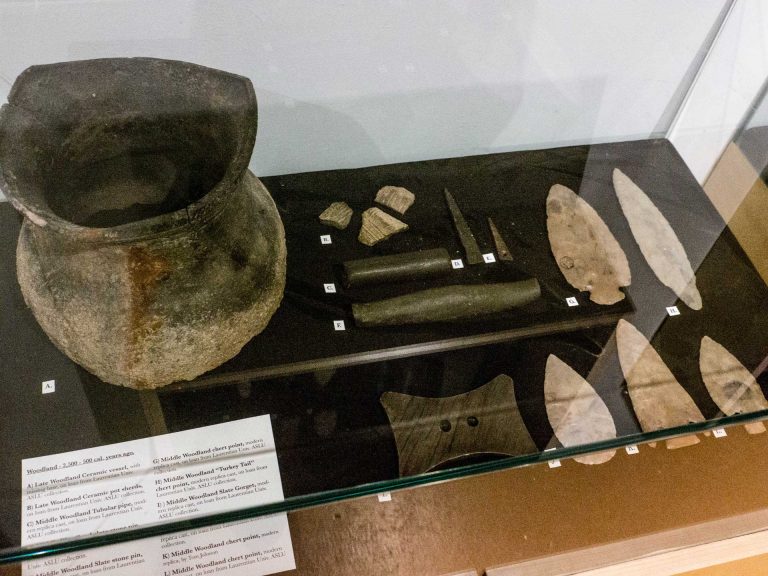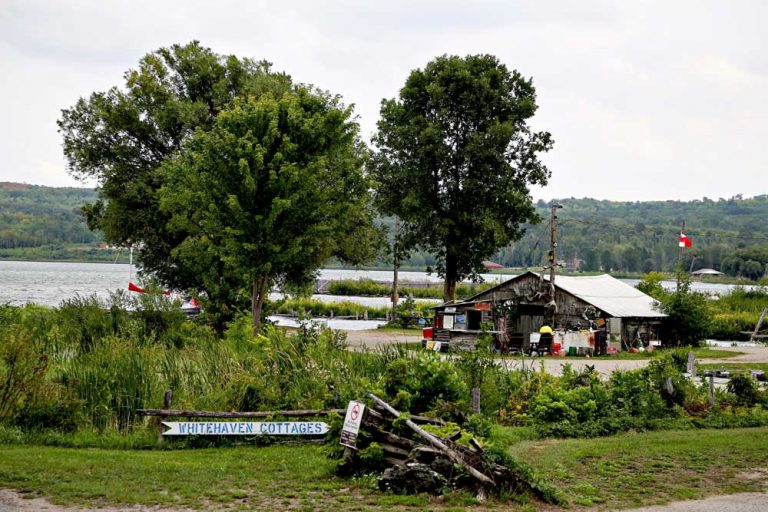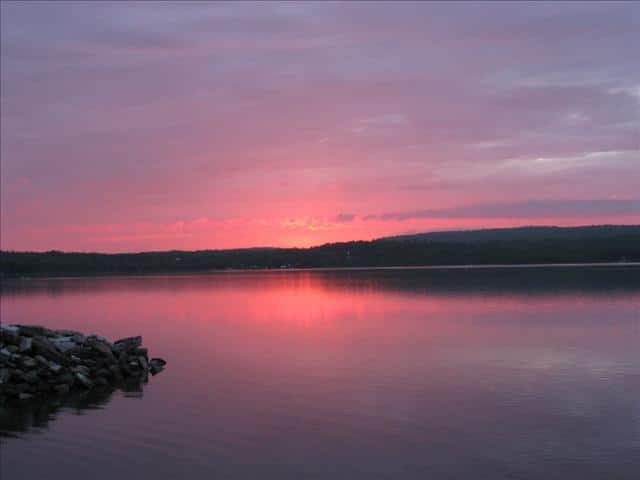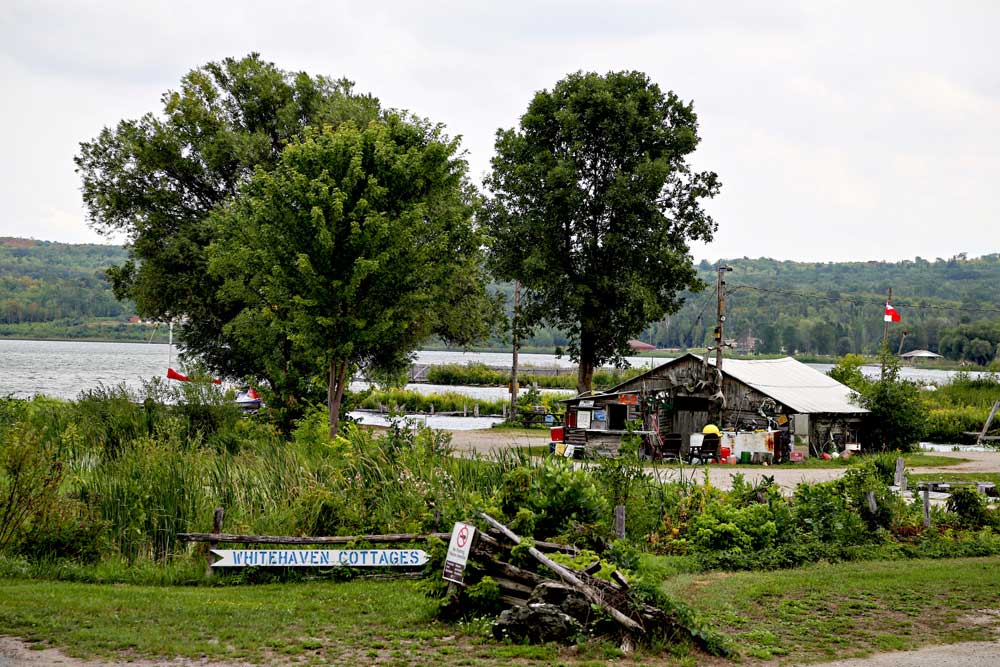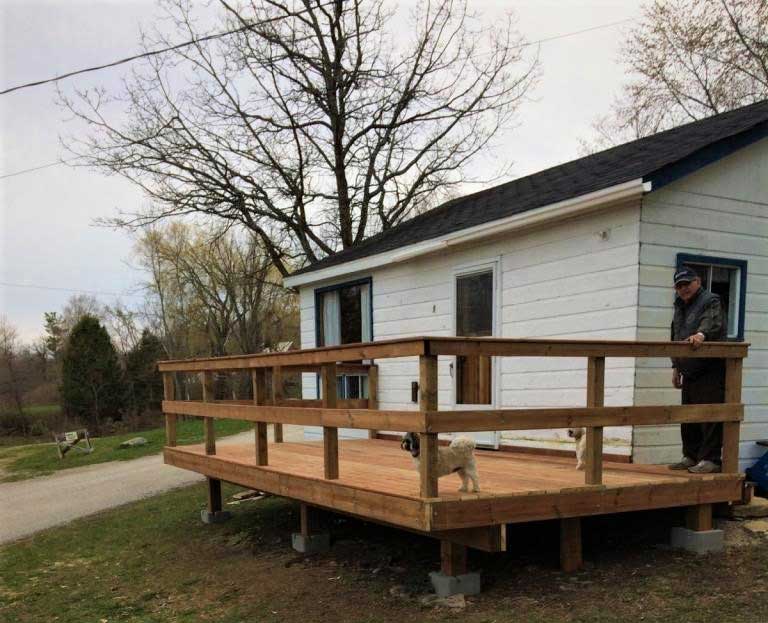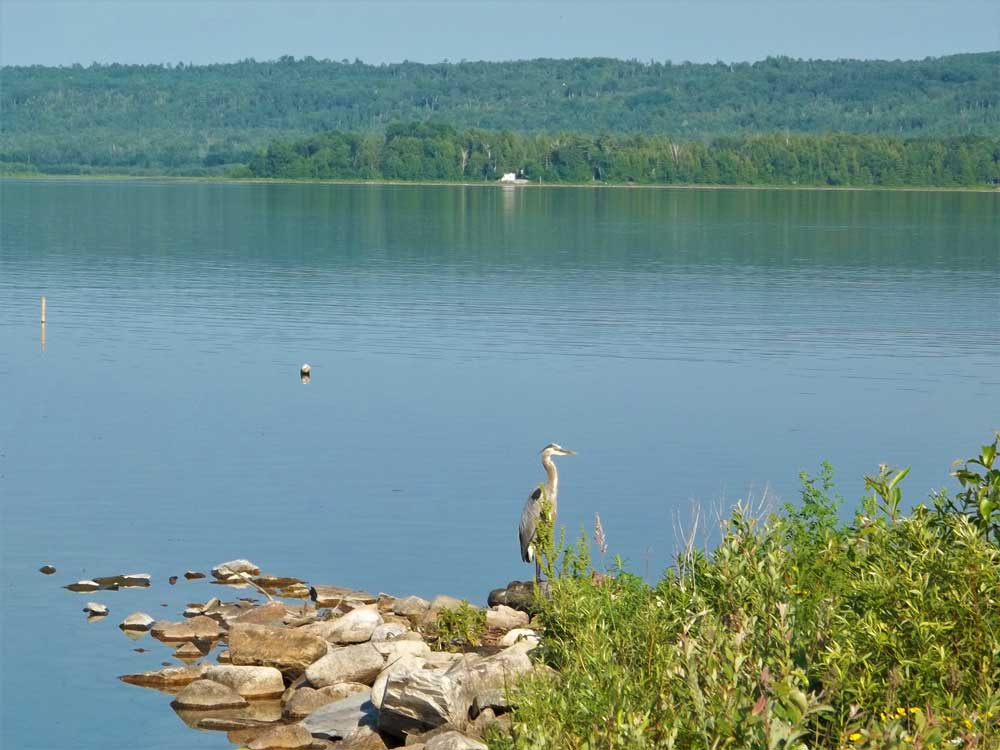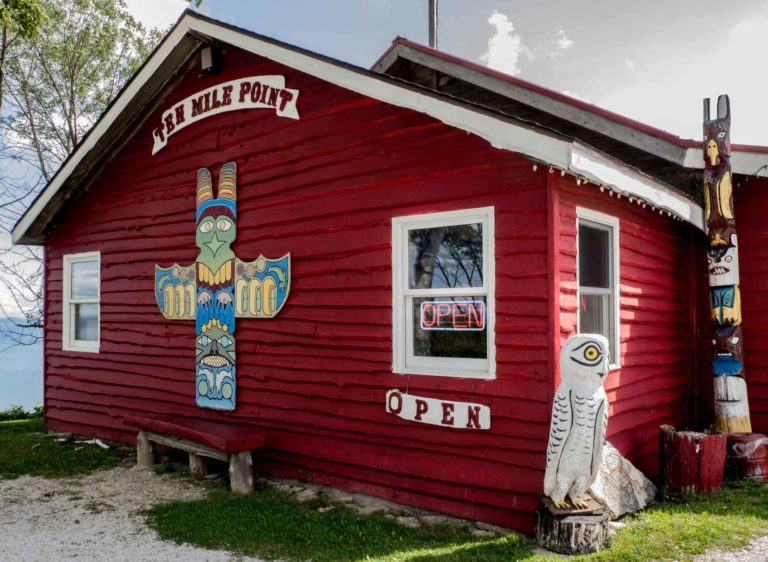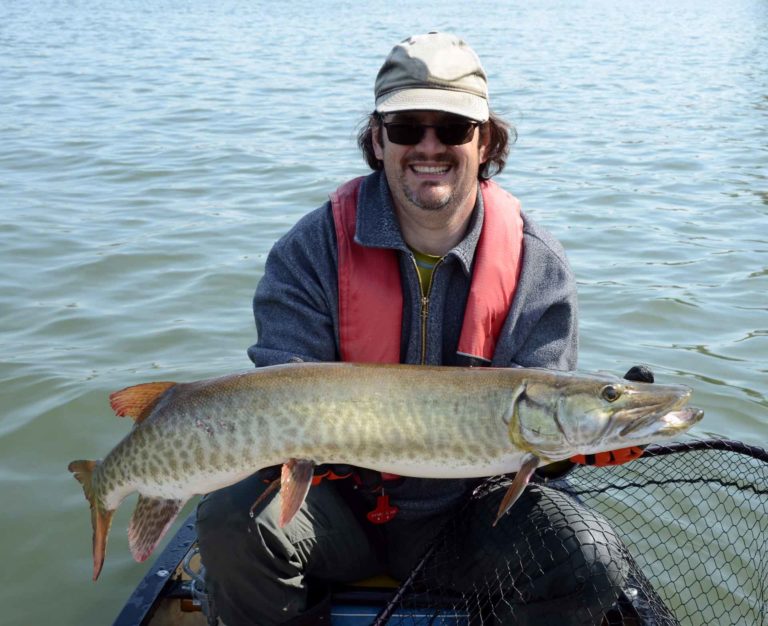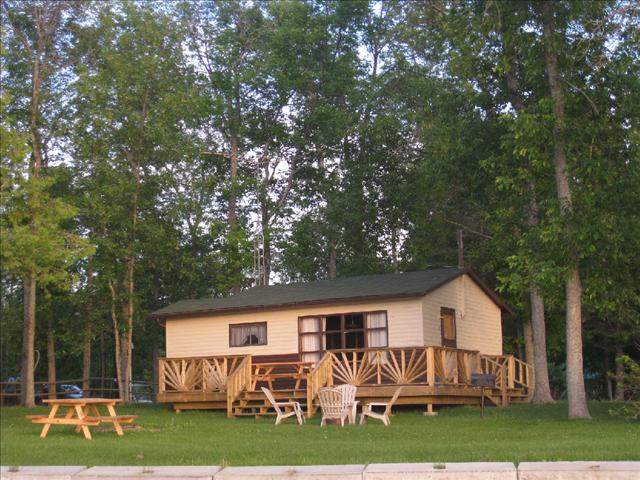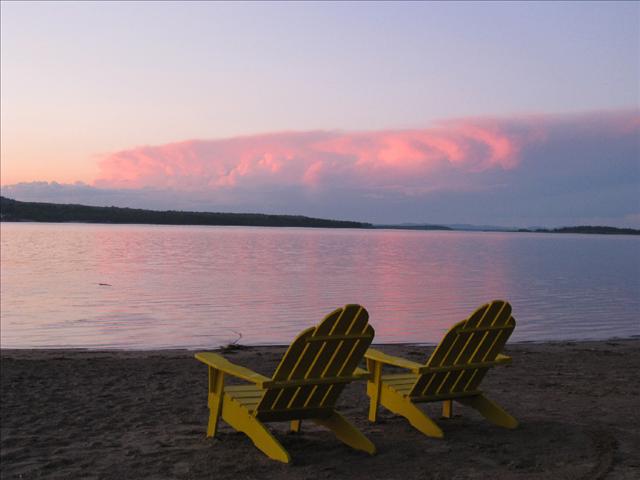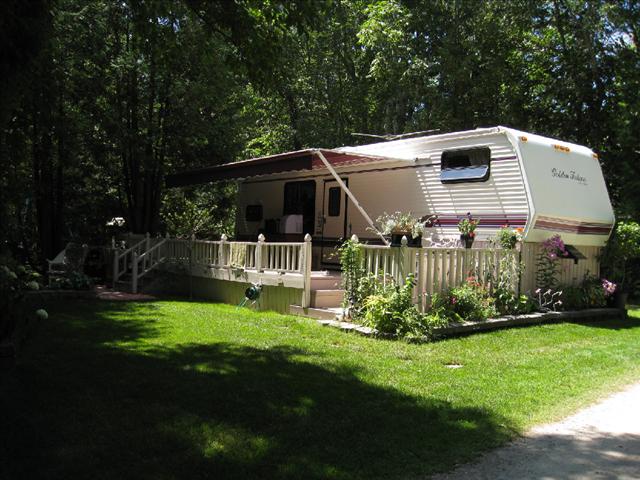Sheguiandah First Nation Powwow
Sheguiandah First Nation
July 1st & 2nd
Sheguiandah First Nation’s annual traditional powwow is held each year the first weekend in July at the community’s waterfront powwow grounds. The beautifully treed setting ensures that there’s shade enough for all and this event is one of the most popular of Manitoulin Island’s Powwow season. The food and crafts vendors are also nestled among the trees and the ambience of this event is one of calm tranquility. Sheguiandah First Nation is located on Highway 6, 10 km south of Little Current.
Latest on Instagram from #sheguiandahfirstnation
Centennial Museum
Centennial Museum
Sheguiandah
Two museums within easy access to each other, in Little Current and Sheguiandah, each distinctive, tell of prehistoric peoples, of the settlers of large homesteads, the builders of towns and villages, the entrepreneurs and their struggles to establish a foothold on largely forested Manitoulin Island beginning in the 1860s when the land was first opened to settlement.
Up the wide, old staircase to the second floor in Turners store on Water Street in Little Current, tucked into a far corner, is the tiny one-room museum dedicated to the Turner family and mercantile history of the last 140 years. A bit like stumbling upon a cache of treasures in great- (or great- great-) grandfather’s attic, the museum’s collection is stacked here and there throughout the little space in and on old glass store cases and counters; an ancient typewriter collects dust beneath the stern gaze of Turner ancestors whose framed photos cover the walls; yellowed newspapers proclaim achievements, wins in boat races and milestones in the business and political life of the town.
When Isaac and Elizabeth Turner arrived in Little Current in 1877, they had only stopped to rest for a few days before continuing on their journey west in pursuit of advantageous land prices, but the aspect of the flourishing Manitoulin town pleased Elizabeth and she refused to move on. Two years later, Turners was established as a dry goods store, selling everything from flour to rubber boots, pots and pans and cloth by the yard.
Little Current was booming in 1879, having been surveyed in 1864-65, after the Treaty of 1862 removed the Indigenous residents, who had been living on their lands and operating businesses there since the 1850s, to the small nearby reserve of Sucker Creek (now Aundeck Omni Kaning First Nation).
On the steamer route, Little Current became a market town, boosted by the huge trade in lumber. In about 1874, the first small sawmill was built, then the larger Red Mill in 1886 and two other large mills shortly after, hiring hundreds of men and sheltering them in boarding houses along the waterfront.
Later, Turners became widely known for its fine British china and wool; it was the place to shop for mohair sweaters, coats of camelhair, cashmere shawls, linens for table and bed and clothing for the whole family, all imported from England. “Canada’s oldest nautical chart dealer” still sells charts, reflecting the family’s passion for boating of Grant Turner who founded the Great Lakes Cruising Club, and of Jib Turner, a sailor of some repute. The iconic Turners map of Manitoulin was developed by Barney Turner in 1949 after he took a course in cartography; that map, with some improvements in the 1960s and in 2006, has been a big seller for seventy years, its vintage look a favorite of souvenir hunters.
Debby and Jib Turner are the owners of Turners today, in the same building the store has occupied since 1913 when it was built by George Strain, after Turners had occupied two other town locations. “We’re the fifth generation of Turners to carry on the family business,” says Debby Turner, “and we’re waiting on the 6th and 7th generations of customers who have shopped here since the doors opened in 1879.”
“Since the high import tariffs of British Trade Act were imposed in the 1970s, Turners has moved toward becoming wholly Canadian, specializing in more Canadiana and local art in the upstairs gallery,” adds Ms Turner. “Turners of Little Current is still in small part a department store but is mostly focused on quality Canadian products while our new store in Elliott Lake is truly a department store. In a way, Turners has come back to its roots.”
Turners of Little Current, 17 Water St, Little Current. Tel: 705-368-2150 Open Monday to Saturday from 9 am to 5:30 pm; Sunday from 11 am to 4 pm. www.turners.ca
Just 10 kilometres south of Little Current on Hwy 6, the Centennial Museum of Sheguiandah offers a sweeping survey of this area’s origins, beginning with the earliest human activity. Artifacts on display, excavated from a quartzite outcrop nearby known as Sheguiandah Hill and carbon-dated by archeologists to 10,000 years ago, are evidence of quarrying by the first humans on Manitoulin Island after the last Ice Age. In 1954, the Sheguiandah archeological site was designated a National Historic Site of Canada, along with the habitation area that encompasses today’s village of Sheguiandah.
Large descriptive panels outline the anthropological periods here and the two excavations of the 1950s and the 1990s that definitively confirmed the age of the findings; glass cases hold the ancient spear points, hide scrapers and other prehistoric tools that define this museum as unique on the Island.
Like its neighbour Little Current, Sheguiandah was a lumber boomtown at the turn of the twentieth century, with three water-powered mills in operation by 1902: a grist mill (for grinding grains into flour), a sawmill and a woolen mill. A map available free at the museum takes visitors on a historical walking tour through the village of Sheguiandah, highlighting the mills, cheese factory, milliner’s shop, blacksmith, school, post office and hotel of olden days.
The luxuriant grounds of the Centennial Museum are filled with several log cabins furnished in period detail and turn of the century farm machinery; picnic tables and lawn chairs invite visitors to relax and soak up the history of this ancient place.
The modern building housing the Museum itself opens onto a hallway lined with photographs of the area’s first settlers, introducing visitors to the Heis, Nicholson, Skippen, Batman and Lewis families that arrived here over 150 years ago. A family feeling pervades the museum, with an authentic recreation of a cozy bedroom with beautifully hung starched cotton nightdress; other vintage clothing in rich-coloured, well-preserved fabrics dot the room among a selection of antique musical instruments: an elaborately-carved Newcombe piano, a violin and a concertina that enlivened homesteaders’ long winter evenings.
The Museum hosts a wide range of events each year: the annual Heritage Alive Art Exhibition runs from July 18 until August 15, and the Manitoulin Fine Arts Association Members’ Art Show from August 20 until September 8. The full line-up of summer and fall events is listed on the website.
Centennial Museum of Sheguiandah, 10862 Highway 6, Sheguiandah. Tel: 705-368-2367. Open 9 am to 4:30 pm every day from May to October. www.townofnemi.on.ca/places/museum
Article by
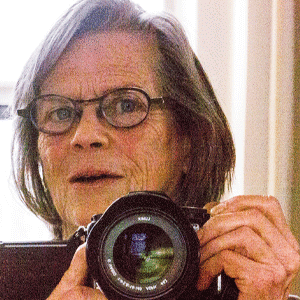
Isobel Harry
Spread the word...
Bass Lake
Bass Lake
Keen fishermen may find:
- Perch
- Muskie
- Bass
- Walleye
There’s more to Bass Lake than bass. The lake boasts a surprising variety of species, as well as a unique mix of terrain and tradition.
Located just west of the village of Sheguiandah, Bass Lake indeed has bass, both large mouth and small mouth. But it also has pike, pickerel, perch, blue gill, and most remarkably: muskellunge. It is, in fact, Manitoulin’s only inland lake to support the coveted game fish, famous for its feistiness and size.
The north shore of the lake is checkered with farms, some still operated by the same families who settled here well over a century ago. Broad green fields roll lazily back from the shoreline towards a limestone bluff, and tractors, in the summer months, chug slowly across them, cutting the first hay of the summer.
The south shore, by contrast, is densely wooded, mostly uninhabited, and punctuated, in two places, by striking outcroppings of white quartzite. These peaks, along with a similar outcropping in the village of Sheguiandah, where an ancient quarry was discovered in the 1950s, represent the only examples of this stark granitic landscape to be found on Manitoulin.
Most of the south shore is owned by Sheguiandah First Nation, members of whom continue to utilize the land in the same manner as their ancestors. “There is still some medicine that we get from there,” notes Noman Aguonie, “and we have a sugar bush that has been used for generations.” In the spring, First Nation families boil sap in a cast iron pot suspended over a fire.
The sugar bush is also noteworthy for harbouring a monster maple that was deemed the largest on Manitoulin in the early 1990s when the late Grant Garrett and the Manitoulin Nature Club held a biggest tree contest.
If there was a biggest fish contest, Bass Lake would probably figure as well: Mike Sprack of Manitowaning once caught a 36-pound muskie here, and about 25 years ago, Kirby Burnett reeled in a 28-pounder while fishing with his cousin Amy Burnett.
Mr. Burnett’s behemoth stretched four feet in length, a third the length of the 12-foot rowboat he was fishing from. To land it, Mr. Burnett says he “hit it over the head with the paddle.”
The Burnett family goes back five generations on Bass Lake. Kirby’s uncle Blake Burnett still farms the property that was settled by his great-grandparents in 1875.
The farmer doesn’t fish much himself, being generally busy with his beef cattle operation.
Yes, Bass Lake itself might look tame and peaceful, but the surrounding hills remain fairly wild. Mr. Burnett has seen many bears and once, several years ago now, a pair of moose.
For anyone who travels Northern Ontario, a moose is not an unusual sight, of course, but it’s highly unusual for Manitoulin. “Those were the first ones I ever saw anywhere on the Island,” Mr. Burnett notes.
Muskie are unusual for the Island too, but they thrive here in Bass Lake. Mr. Sprack has spent many pleasurable evenings on Bass Lake. Many, many evenings.
“Through the latter part of the ‘70s and all of the ‘80s, I would spend four to five nights a week at Bass Lake,” he says. “It’s a beautiful little lake and puts out a lot of muskie for its size. It’s deceptive, looking at it.”
Just a mile and a quarter long, Bass Lake doesn’t look like it would support many muskie, but it reaches depths of 40-feet-plus, according to Mr. Sprack, and “it’s a basin lake, with no shoals. Basically, you can run around it all day and not hit any rocks.
Muskie have frequented the lake for decades. Cliff Lewis, an old-timer with whom Mr. Sprack spoke at one time, “told me that they’d been here in this lake for as long as he could remember, and he fished in the 1930s.
Mr. Sprack concedes that fingerlings were stocked in the 1970s, but he describes it as a “reintroduction, a way to strengthen the gene pool. I find it hard to believe that they would have stocked muskie prior to the 1930s.”
His assumption is that the muskie “migrated up the creek (Bass Lake Creek, which runs from the lake to Sheguiandah Bay) before it was damned.”
Now, in summer months anyway, the creek is not much more than a trickle, but conveying muskie up from the big water wasn’t its only function in the old days. It once powered three mills, a grist mill, a sawmill and a woolen mill.
“The grist mill was at the headwaters of the creek, where it leaves Bass Lake,” a local historian says, “It was torn down (in 1958) when they were working on Highway 6.
The late Alec Murray, who lived just west of the creek outlet on Bass Lake, and whose family operated Manitoulin Gardens, a fresh produce and flower business, for many years, said it’s a real shame that the mill was torn down. “It was three storeys, with a log frame. It could’ve been a real tourist attraction.
Tourists should still be attracted to Bass Lake, though, Anglers, especially, will enjoy testing its waters, for muskie, of course, but also for bass or perch or pickerel, or for pike, the muskie’s cousin.
Just make sure you know the difference. Mr. Sprack notes that muskie and pike are often confused, and since there is a minimum size requirement for muskie, 32 inches, this can be a problem because a person might land a smaller fish they believe is a pike, when it’s really a muskie.
The Sudbury chapter of Muskie Canada has recently posted an identification sign at the Bass Lake public boat launch, located at the end of Russell Street, near the intersection of Highway 6 and the Townline Road.
It gets a bit complicated, since pike and muskellunge can cross-breed, but Mr. Sprack stresses that the “hybrid is still considered a muskie, and it’s pretty easy to tell the difference: pike have white spots, but neither muskie nor hybrid muskie do.
If fishing isn’t your scene, there are other ways to experience Bass Lake, notably an excellent hiking trails: the “Lewis Twin Peaks Trail”, leaves from a pullover spot on the west side of Highway 6, just south of the bridge over Bass Lake Creek.
Named for the access it provides to the two quartzite peaks that loom above the lake’s southeast shore (as opposed to the creepy, short-lived David Lynch TV series of the same name) this two-kilometre trail is well worth experiencing.
Another, admittedly lazier, option is to simply drive along the Townline Road. Doing so, you’ll see the lake spreading out to the south, its surface shimmering in the sun, a fishing boat or two (or, more rarely, 10) relieved against the rippled water.
Nearby places to stay, eat and play
Sheguiandah First Nation Powwow
Centennial Museum
Sheguiandah National Historic Site: Twice the Age of the Pyramids of Egypt
Whitehaven cottages, tent & trailer park
Batman’s Cottages T&T Park
There are interesting buildings to see too, such as the Quonset hut (now a residence) that used to be Sheguiandah hockey arena (and home of the Sheg Bears, a team that apparently won a few trophies in its day), and the old Howland municipal building, which used to be a schoolhouse.
The late John Dunlop, who lived on the south side of nearby Pike Lake, used to drive a horse and cutter across the lake in winter to reach the school, and members of the Atkinson clan were known to skate across on occasion.
While driving, or hiking, or fishing around Bass Lake, expect more than the obvious.
Bass Creek, where it runs out of the lake that gives it its name and down to Sheguiandah Bay, was completely rehabilitated as a walleye/ pickerel spawning ground a few years ago by the Little Current Fish and Game Club and the Island wide environment organization, Manitoulin Streams.
Rocks were placed “just so” in the water to slow down the current and to make the way easier for spawning fish to fight their way up stream. The creek was designed for pickerel but other spawning fishy species find the improvements useful too in their reproductive lives.
Significant tourist attractions just downstream are the reproduction Batman’s Mill (on historic grist mill recreated and a real photo-op for visitors) and nearby Bass Creek is a raised viewing platform that provides a fisheye view up and down the stream with all of its underwater improvements within view. In the spring, you can also watch the spawning pickerel/ walleye making use of these man-made improvements as they rush to reproduce.
Whitehaven cottages, tent & trailer park
Whitehaven Cottages
Sheguiandah Bay
Nine modern, newly renovated housekeeping cottages on Sheguiandah Bay. Full bathrooms and kitchens, all linens supplied. Located ½ mile east of Highway 6, 15 km south of Little Current, 54 km north of the ferry dock at South Baymouth. Cottage sleeps 2 – 8, electric heat, firepits, firewood and WIFI. Gas, oil, freezer service, and boat launch. Excellent fishing for Northern Pike, Bass, Muskie, Pickerel. Good swimming, sand bottom. Pet friendly. Most of our guests are repeats, so book early! Open May 1 to October 15. Family owned for 3 generations. Matt and Laurie Stillwaugh, 78 Mill Street, Sheguiandah, ON.
Phone: 705-368-2554
Email: whitehavencottages@gmail.com
Contact this accommodation
Also in the area
Ten Mile Point Trading Post
Sheguiandah First Nation Powwow
Centennial Museum
Bass Lake
Batman’s Cottages T&T Park
Batman’s Cottages T&T Park
Batman's Cottages & Campground
Sheguiandah Bay
Just south of the historic village of Sheguiandah, we are a place families can escape to and discover an enriching camping experience.
3 spacious housekeeping cottages (2+3 bedrooms). 142 large, treed, waterfront or wooded campsites with 2 and 3-way hookups. Many pull-throughs. Excellent washrooms and showers, fine sandy beach, Wi-Fi, recreation hall, 2 playgrounds and more.
Great fishing in Georgian Bay. Seasonal campers welcome.
Ph. 1-877-368-2180.
Website: www.batmanscamping.com
Email: info@batmanscamping.com

